what shall we play?
"african rhythms," replied double.
it was settled.
http://across110thstreet.podomatic.com/
this is london-town summer time near the crane's nest.
dispensing revolution - hasta la victoria siempre!
love and health to all...
I had just arrived in South Asia after five years in the former Soviet Union, where I saw one leader after another dispensing with truly competitive politics.
Elections kept happening, but there was only a glaze of competition; for the most part, the opposition candidates were docile, handpicked characters, because no one else was allowed to run. On the rare occasions when actual rivals were able to take part, as in recent elections in Ukraine and Georgia, the candidates who lost found themselves in court or in prison. The experiment in democracy, born in the euphoria of the 1990s, seemed to be ending.
South Asia
In South Asia, that experiment is much closer to its beginning.
For many years, India and Sri Lanka were democracies surrounded by a grab bag of monarchies, dictatorships and military regimes. But then their neighbors began sliding into the democratic column, as if by force of gravity…
A cascade of elections is taking place this year and next, with six out of seven governments in South Asia — Sri Lanka is the exception — likely to change. Many of them have the white-knuckle feeling of an experiment: What happens when elections run into resistance from institutions that took shape over the course of decades?…
As South Asian institutions adjust, its new democracies will have to contend with “the sheer weight of the past,” [Sumit Ganguly, a professor of political science at Indiana University] said. “It is going to be a form of ballast, that you are going to have to slowly jettison,” he said. But he rejected the notion that the shift to democracy could reverse itself. “People get a sense of excitement that they can kick out the rascals,” he said. “It’s very difficult to tell them they’re not going to be able to get rid of the next set of rascals.”…

Unlike a mirage on the horizon, this quaint little abode is entirely real, even if it seems to half-disappear through alternating wood and (seemingly) see-through slats.

A project by Phillip K Smith III (images by Stephen King Photography and Lance Gerber), Lucid Stead modifies an existing abandoned home shape that is straightforward and familiar.

Through its materials, however, the artist makes the building interact with the landscape in mind-bending ways, reflecting its surroundings via long horizontal siding and framed rectangular (faux) windows that slowly light up at night. The effect is a strange partial vanishing of the structure.
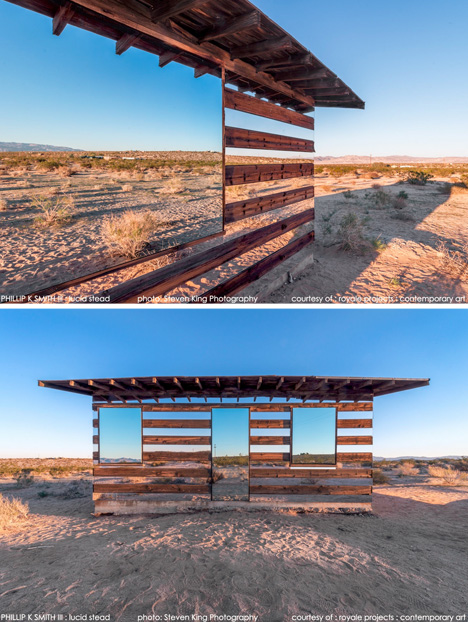
Of the work, the artist writes: “Lucid Stead is about tapping into the quiet and the pace of change of the desert. When you slow down and align yourself with the desert, the project begins to unfold before you. It reveals that it is about light and shadow, reflected light, projected light, and change.”
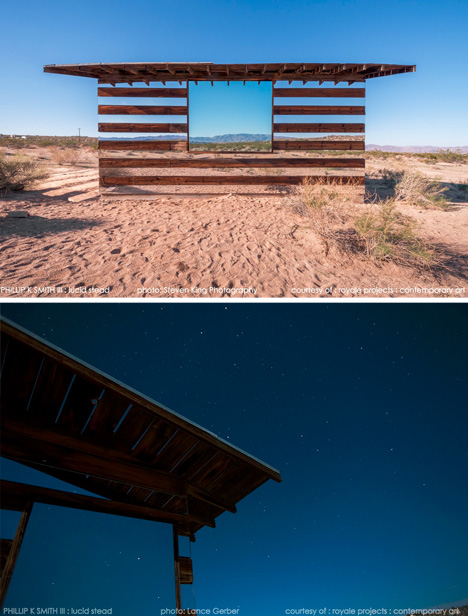
From the portfolio page: “Composed of mirror, LED lighting, custom built electronic equipment and Arduino programming amalgamated with a preexisting structure, this architectural intervention, at first, seems alien in context to the bleak landscape. In daylight the 70 year old homesteader shack, that serves as the armature of the piece, reflects and refracts the surrounding terrain like a mirage or an hallucination. As the sun tucks behind the mountains, slowly shifting, geometric color fields emerge until they hover in the desolate darkness.”

Good home design is not just about a perfect product but about process and context, as illustrated in this case through diagrams, videos and photos of how to make a small space work on multiple levels in Madris, Spain (both physically and proverbially).

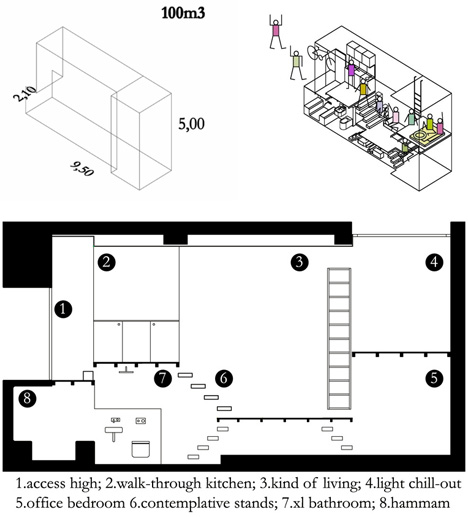
MYCC (images by Elena Almagro) managed to fit in a full bathroom, living room, kitchen, bedroom and office into this curiously-shaped urban shelter, narrow yet also relatively deep and tall (approximately: 2 meters wide, 10 meters long and 5 meters high).

A minimal combination of stairs and ladders connect the different platforms within the resulting studio, set out of the way and rendered partially transparent (staircase sans risers) or set off to the side (ladder along the wall) to help leave open lines of sight between various rooms.


A large skylight directly illuminates the work space, and, indirectly, the rest of the unit as well. The lack of horizontal space limited opportunities for plan-level complexity, but opened up spatial options in section as the dimensional diagram outline shows below.
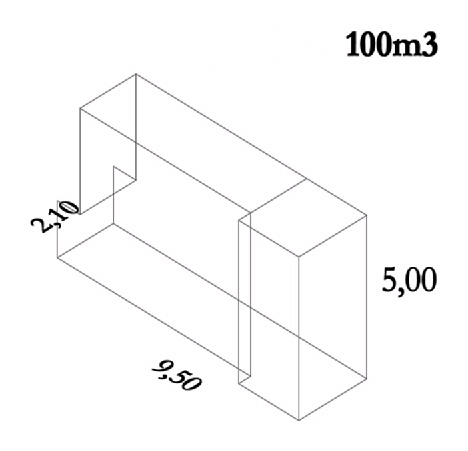
A quirky animated video takes viewers on a short tour of the conceptual design process, starting with the entry level then splitting off to show how the various floors, nooks and crannies took shape.
In Nigeria, 60 million people own generators to provide electricity for their homes and businesses.
The country has experienced major power shortages for decades and made daily power blackouts the norm…

Between the eerie glowing lights, the otherworldly cavernous spaces and the long strange trip it takes to get there, this subterranean museum feels like it could be located on an alien planet. The Salina Turda Salt Mines of Romania have been converted to the world’s largest salt mining museum, but this is no dry historical tour – there’s weird wooden architecture, a playground and even a ferris wheel.
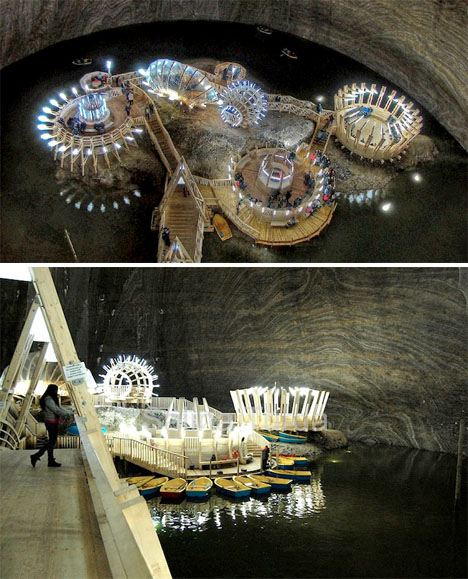

All of the LED lights sticking out of those unusual architectural shapes at the center of the museum make it quite a sight from far above, when looking down into the mine plunging 120 meters (393 feet) into the earth. Visitors take elevators to each of the three museum chambers at various depths to see the restored equipment.
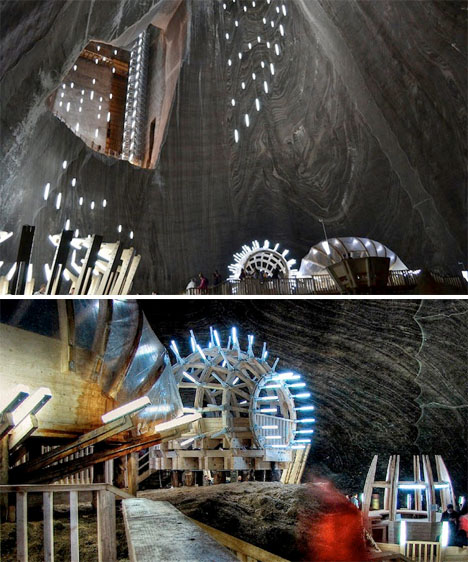
The sports arena, amphitheater, mini golf course and bowling lanes are reason enough to take a trip to the mine, but the caverns themselves are the main attraction. Uplighting shows off the amazing natural patterns on the excavated walls. There’s even a small subterranean lake with boats for rent.
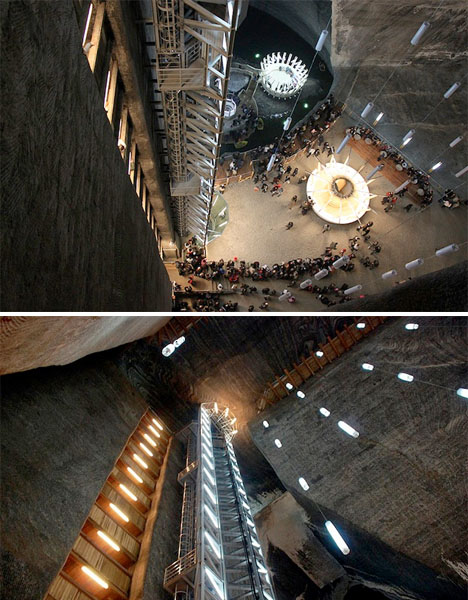
The mines were first excavated in the 17th century and provided a vast wealth of salt for the Romans. The interior is totally free of allergens and almost entirely devoid of bacteria, and maintains a temperature of about 52 degrees with 80% humidity.
Diss Guy: Patrick Redford & Isaiah Thomas: Inspiration in Small Packages
As previously stated in this space, I’m a bit partial towards ball players reigning from the Emerald City. And maybe there’s a bit of that bias popping up in my selection of this week’s Diss Guy, Isaiah Thomas, or maybe I’m just crediting the inspiring elements of Thomas and the talented writing of Patrick Redford. So sling your “homer” accusations all you want. My skin is thick and I’ll use the raindrops of my city to slip and slide past your misplaced arrows.
It was yet another tough game for the Kings with Oklahoma City in town (as of this writing, they’re 4-12 and second-to-last in the West) when the league’s improbable leader in fourth quarter scoring, fourth quarter minutes played and Sam Cassell giant testicle dance moments (Isaiah Thomas is that man) started the fourth quarter and put on what’s become a semi-normative performance: 8-14 from the field (2-5 from 3 and 3-3 from the line) while picking up three steals and two assists against zero turnovers. He scored in a variety of half-court sets and acrobatic penetrations and, as we’ve seen so many times, almost singlehandedly carried the deadweight of the Kings to victory.
The strength of Patrick’s piece lied in the creativity of its everyman-ness. I’ve never watched Thomas and thought of him as “a corgi who can outrace a Ferrari,” but I get it, I can see it. And where Patrick refers to Isaiah as “tacos with pickled carrots on top,” he completely loses me because I’ve never eaten that and don’t cherish it or appreciate it the way I do Thomas or corgis sprinting past Italian sports cars. There’s something in this piece for everyone – or at least for those of you who, like me, have seen Thomas’s nuclear fourth quarter explosions and been spellbound by a Steph Curryesque eruption. Patrick’s “really complicated secret handshakes” are my single minded trash compactors. His “beers on the house” are my “beers on the house.” We don’t have to agree on everything to know that Isaiah Thomas encompasses things beyond our grasps.
Thomas’s magnificence doesn’t just rest passively in the world of box scores or leading the league in bench scoring. His gooey substance (get your mind out of the gutter) is his ability to inspire. A 60th pick? An ignored, forgotten, overlooked mini-man David in a world of brutish Goliaths? A secret weapon chained to bench seats between Chuck Hayes and Jimmer Fridette, salivating at inevitable 4th quarter rallies? He inspires the vertically challenged who are subject to height discrimination. He inspires the dreamers to keep on dreaming. He inspires kids going to Curtis High School in University Place, Washington. He inspires young men living in Berkley and 33-year-olds in Seattle. He’s the epitome of the Giant Testicle dance … a bottled up fury of offensive prowess uncorked and shocking a mediocre basketball team out of its dustily losing doldrums and all from the bench. Thomas “is not a perfect player” as Patrick writes, and he never will be. But he doesn’t have to be perfect or even close to it to transcend race, age, gender, or anything other demographic differences that set us apart from one another (I even think he inspired my dog, Captain Sullivan, the other night), to inspire and captivate.
Miss Guy: Omer Asik in Morey State Penitentiary
I first started exploring the impersonal General Managerial aspects of Rockets GM Daryl Morey and Philly GM Sam Hinkie back in October when Philadelphia cut Royce White. My premise: The probability-based approach Hinkie and Morey take to personnel management created a favorable risk/reward ratio where a player with White’s mental health challenges could be given an opportunity. The more I looked, the more it became clear that behind the transparent strategies of NBA progressiveness – from advanced analytics to the value of Shane Battier to the limitations of traditional box scores to nutrition and sports science technologies– resided a calculating throat-slitting approach to roster management which has of late resulted in White being cut and the current less-than-ideal situation of Omer Asik.
Fast forward a month and the Houston dream of a Twin Towers revival has evaporated. It took the Rockets all of eight games to realize Asik and Dwight Howard wouldn’t be co-existing. After Asik was pulled from the starting lineup and saw his minutes decrease, we were treated to reports of him asking for a trade with his agent Andy Miller saying:
I would say the situation is very frustrating right now, and we’re trying to work through it. For Omer, the objective has always been to continue to develop and grow as a player. That’s why we came to Houston in the first place. If that objective can’t be met, if we can’t get the right platform to grow and contribute as a player, it’s certainly frustrating.
This is consistent with Asik’s departure from Chicago where he was caught in an unwinnable timeshare with Joakim Noah and Taj Gibson, playing less than 15 minutes/game. The Bulls owned the team option on Asik and had an opportunity to match any offer, but Morey used the “poison pill” option and back-loaded Asik’s deal from just over $5mill/year for years one and two all the way up to ~$14.9mill for year three; forcing the Bulls to let the Turkish big man go. For perspective, that’s Marc Gasol/Kevin Love/Russell Westbrook territory – for Asik.
With the Howard signing and the inability to play a Dwight/Asik front court together, the Rockets have found themselves in this difficult position with a justifiably disgruntled center guaranteed almost $15mill next year (of that $15mill, only $8.4mill would count against the cap making a deal much more palatable, but still pricey). Morey will likely find a way to trade himself out of this predicament and that’s to his credit. That another team would take the shitty end of this Asik deal isn’t quite beyond comprehension, but most of us have lost faith in NBA front offices to make wise or intelligent decisions and so Morey will likely win again. The Rockets will win. Dwight Howard wins with a shit-eating grin stretched across his face. James Harden will win, but continue to lose on defense. But Omer Asik … for now … will lose even though he’s been re-introduced to the Rockets rotation; most likely to recover some of the value he’s lost by demanding a trade.
And this is where the pragmatism of Daryl Morey is problematic. The Rockets went out of their way to woo Asik with the back-loaded contract and a full-time starting spot on an up-and-coming playoff team. But when Morey had a chance to improve the team, any allegiances to Asik and White went out the window. Feelings can’t be a part of every NBA decision and a GM’s loyalty should be to the franchise, not Turkish centers with limited offensive game and combo-forwards who haven’t appeared in NBA games. It’s not that simple though. Where the team sees Asik, White, Jeremy Lamb, Kevin Martin and a gaggle of other players as simple assets are likely broken promises and inconsistent messages.
It’s hard to critique Morey for the team he’s built in Houston, but it’s starting to feel like a double edged sword he’s wielding. Within an approach that takes into account all the odds and probabilities, is there room for doing the right thing or when you’re in the midst of a managing the core product of a billion-dollar business is the “right thing” even definable? Are White and Asik (and whoever’s tossed aside next) basketball collateral damage; stacks of numbers and averages waiting to be swapped out for the next-best-value? Today, everything seems hunky dory and with Morey’s big ass brain out-thinking the rest of us, it’s likely that tomorrow will be equally hunky, but how many more frustrated Whites and Asiks will it take to get there?

Cut. Print it. That’s a wrap. One section (or scene) at a time, these designers are turning areas of Brooklyn into fashionable products that abstract the motion and colors of a place, converting them into a physical scarf.


First they film a given neighborhood; next they stretch out and process the results; finally they print it out along the length of the scarf. So far they have five to sell but hopefully more to come.

The Brooklyn Block “are a passionate bunch with back ground in interaction, architecture and urban design” whose “goal is to create remarkably thoughtful and exploratory products.”



One could accuse them of being a bit gimmicky, but a few brief rebuttals for would-be critics: first, on the aesthetic side, the scarfs are quite attractive, and second, on the conceptual side, there is something to be said for the patterns and colors of a place, whether the memories they conjure are consciously or subconsciously recognized. Finally, “The Brooklyn Block offers products that tell stories” – if nothing else, these are neat conversation pieces for those curious about their origins.